PRINCIPLES OF TAXATION F/BUS.+INVEST.
22nd Edition
ISBN: 9781259917097
Author: Jones
Publisher: MCG
expand_more
expand_more
format_list_bulleted
Concept explainers
Textbook Question
Chapter 17, Problem 5QPD
A basic principle of federal tax law is that a return of investment is nontaxable. Discuss the application of this principle to Social Security payments.
Expert Solution & Answer
Want to see the full answer?
Check out a sample textbook solution
Students have asked these similar questions
Please answer the financial accounting
Please give me true answer this financial accounting question
General Accounting
Chapter 17 Solutions
PRINCIPLES OF TAXATION F/BUS.+INVEST.
Ch. 17 - Prob. 1QPDCh. 17 - Discuss the tax policy reasons why gifts and...Ch. 17 - In what way does the tax law give preferential...Ch. 17 - Prob. 4QPDCh. 17 - A basic principle of federal tax law is that a...Ch. 17 - Prob. 6QPDCh. 17 - If an individual purchases property insurance on...Ch. 17 - Prob. 8QPDCh. 17 - Prob. 9QPDCh. 17 - Prob. 10QPD
Ch. 17 - Prob. 11QPDCh. 17 - Prob. 12QPDCh. 17 - Prob. 1APCh. 17 - Prob. 2APCh. 17 - Prob. 3APCh. 17 - Prob. 4APCh. 17 - Prob. 5APCh. 17 - Prob. 6APCh. 17 - Prob. 7APCh. 17 - Prob. 8APCh. 17 - Prob. 9APCh. 17 - Prob. 10APCh. 17 - Prob. 11APCh. 17 - Prob. 12APCh. 17 - Prob. 13APCh. 17 - Prob. 14APCh. 17 - Prob. 15APCh. 17 - Prob. 16APCh. 17 - Prob. 17APCh. 17 - Prob. 18APCh. 17 - Prob. 19APCh. 17 - Prob. 20APCh. 17 - Prob. 21APCh. 17 - Prob. 22APCh. 17 - Prob. 23APCh. 17 - Prob. 24APCh. 17 - Prob. 25APCh. 17 - Prob. 26APCh. 17 - Prob. 27APCh. 17 - Prob. 28APCh. 17 - Prob. 29APCh. 17 - Prob. 30APCh. 17 - Prob. 31APCh. 17 - Prob. 32APCh. 17 - Prob. 33APCh. 17 - Prob. 1IRPCh. 17 - Prob. 2IRPCh. 17 - Prob. 3IRPCh. 17 - Prob. 4IRPCh. 17 - Prob. 5IRPCh. 17 - Prob. 6IRPCh. 17 - Prob. 7IRPCh. 17 - Mrs. Newton, who is a self-employed author, paid...Ch. 17 - Prob. 9IRPCh. 17 - Prob. 10IRPCh. 17 - Prob. 11IRPCh. 17 - Prob. 12IRPCh. 17 - Prob. 13IRPCh. 17 - Prob. 14IRPCh. 17 - Prob. 15IRPCh. 17 - Prob. 16IRPCh. 17 - Prob. 1RPCh. 17 - Prob. 2RPCh. 17 - Prob. 3RPCh. 17 - Prob. 4RPCh. 17 - Prob. 5RPCh. 17 - Prob. 1TPCCh. 17 - Prob. 2TPCCh. 17 - Prob. 3TPCCh. 17 - Prob. 1CPCh. 17 - Prob. 2CPCh. 17 - Prob. 3CP
Knowledge Booster
Learn more about
Need a deep-dive on the concept behind this application? Look no further. Learn more about this topic, accounting and related others by exploring similar questions and additional content below.Similar questions
- As of July 1, 2022, the investee had assets with a book value of $3 million and liabilities of $74,400. At the time, Carter held equipment appraised at $364,000 more than book value; it was considered to have a seven-year remaining life with no salvage value. Carter also held a copyright with a five-year remaining life on its books that was undervalued by $972,000. Any remaining excess cost was attributable to an indefinite-lived trademark. Depreciation and amortization are computed using the straight-line method. Burrough applies the equity method for its investment in Carter. Carter's policy is to declare and pay a $1 per share cash dividend every April 1 and October 1. Carter's income, earned evenly throughout each year, was $598,000 in 2022, $639,600 in 2023, and $692,400 in 2024. In addition, Burrough sold inventory costing $91,200 to Carter for $152,000 during 2023. Carter resold $92,000 of this inventory during 2023 and the remaining $60,000 during 2024. Required: a. Determine…arrow_forwardFinancial Accountingarrow_forwardA company has an annual demand for.... please answer the financial accounting questionarrow_forward
- On July 1, 2022, Burrough Company acquired 88,000 of the outstanding shares of Carter Company for $13 per share. This acquisition gave Burrough a 25 percent ownership of Carter and allowed Burrough to significantly influence the investee's decisions. As of July 1, 2022, the investee had assets with a book value of $3 million and liabilities of $74,400. At the time, Carter held equipment appraised at $364,000 more than book value; it was considered to have a seven-year remaining life with no salvage value. Carter also held a copyright with a five-year remaining life on its books that was undervalued by $972,000. Any remaining excess cost was attributable to an indefinite-lived trademark. Depreciation and amortization are computed using the straight-line method. Burrough applies the equity method for its investment in Carter. Carter's policy is to declare and pay a $1 per share cash dividend every April 1 and October 1. Carter's income, earned evenly throughout each year, was $598,000 in…arrow_forwardCompute the materials variances on these financial accounting questionarrow_forwardSolve this general accounting questionarrow_forward
arrow_back_ios
SEE MORE QUESTIONS
arrow_forward_ios
Recommended textbooks for you
 EBK CONTEMPORARY FINANCIAL MANAGEMENTFinanceISBN:9781337514835Author:MOYERPublisher:CENGAGE LEARNING - CONSIGNMENT
EBK CONTEMPORARY FINANCIAL MANAGEMENTFinanceISBN:9781337514835Author:MOYERPublisher:CENGAGE LEARNING - CONSIGNMENT- Century 21 Accounting Multicolumn JournalAccountingISBN:9781337679503Author:GilbertsonPublisher:Cengage
 Individual Income TaxesAccountingISBN:9780357109731Author:HoffmanPublisher:CENGAGE LEARNING - CONSIGNMENT
Individual Income TaxesAccountingISBN:9780357109731Author:HoffmanPublisher:CENGAGE LEARNING - CONSIGNMENT



EBK CONTEMPORARY FINANCIAL MANAGEMENT
Finance
ISBN:9781337514835
Author:MOYER
Publisher:CENGAGE LEARNING - CONSIGNMENT

Century 21 Accounting Multicolumn Journal
Accounting
ISBN:9781337679503
Author:Gilbertson
Publisher:Cengage


Individual Income Taxes
Accounting
ISBN:9780357109731
Author:Hoffman
Publisher:CENGAGE LEARNING - CONSIGNMENT
Chapter 19 Accounting for Income Taxes Part 1; Author: Vicki Stewart;https://www.youtube.com/watch?v=FMjwcdZhLoE;License: Standard Youtube License